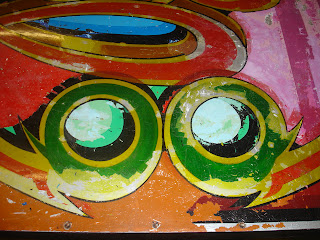As recently as the 1980s, poster or "ticket" writing was a staple of signwriters everywhere. It's a measure of how much we've changed that this form of advertising, once seen as the quickest and most economical way to get timely information across, now seems unwieldy, and much more of an undertaking.
 | ||||||
| from Pen and Brush Lettering and Practical Alphabets, Blandford Press, 1952 |
As the name suggests, the "One-Stroke" style honed in the 40's and 50's to suit this ephemeral, quick-turnaround work, has been stripped of serifs and other extraneous elements. Its dynamic effect relies on fast, fluid execution and parallel, chisel-ended verticals.
Although its form is governed by utility, one of the joys of coming across this lettering is in detecting the hand of the maker; the small flourishes, eccentricities or deviations from the norm that are inevitable when a human hand is involved. As Emerson wrote, 'Though he were never so wilful... Man cannot wipe out of his work every trace of the thoughts amidst which it grew.'
Nowadays the One-Stroke letter awaits our appreciation in front of neglected bastions of civilization like churches of obscure denomination, or cut-price shoe shops. I was surprised and delighted to find the details of weekend engineering work at New Cross Station brushed with great panache, manicules and all. In black on fluorescent yellow card, perhaps drop-shaded in red, the aesthetic violence of the style remains undiminished (Onward Christian Soldiers; Prices SLASHED!). If we sense that it comes from another time, this only adds to the arresting effect.
 |
| Christmas poster at Stoke Newington Baptist Church combining poster lettering with a traditional grotesque face for compactness and readability. |
Another moribund font commemorated here by Phoebe Blatton.











